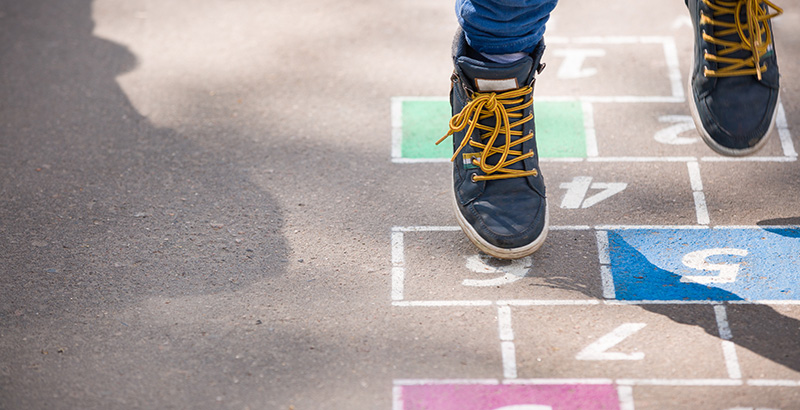Bers: To Welcome Students Back to In-Person Learning, Build a Coding ‘Playground’ to Boost Their Academic & Social-Emotional Skills

Get essential education news and commentary delivered straight to your inbox. Sign up here for The 74’s daily newsletter.
As schools across the country return to in-person classes, elementary school teachers face the challenge of helping students get up to speed in both academic and social-emotional skills. Coding offers an opportunity to re-engage children into communities of learning in a holistic way, supporting both a range of STEAM — science, technology, engineering, arts and math — and soft skills. The metaphor at the heart of my book Coding as a Playground can help to explain how.
To illustrate the idea of coding as a playground, contrast playgrounds with playpens. A playpen is safe, but very limited. I can put my child in a playpen while I cook and know that she’s going to be okay, but she’s limited in terms of opportunities for learning, discovery, socialization and creativity. Playpens do not offer the same opportunities as playgrounds.
As children play, interact and communicate on a playground, they are developing physically, socially, linguistically and emotionally. There are even opportunities for moral development, when, for example, a child decides whether to cut in line for the seesaw or go to the back and wait. Playgrounds are open, creative spaces that support six behaviors of the Positive Technological Development framework that I developed, which I call the six Cs: communication, collaboration, community building, content creation, creativity and choice of conduct.
When educators think of bringing coding into the classroom — or using new technologies with students — they should create just these sorts of playground opportunities. For example, with the KIBO robot developed in my DevTech research lab at Tufts University, we hope to facilitate coding playgrounds for young children that will give them the chance to play different roles: the coder, the scanner, the builder.
Anyone who has spent time on a playground knows that children will say to their caregivers, “Watch me!” They’re proud of what they can do, and they want to show it off. Teachers can encourage children’s natural pride in their work by making time to share their coding projects and their learning with the class. This also helps build community, when, for example, the class comes together to see how different groups programmed their robots to dance. Children will celebrate each other’s triumphs and offer feedback for addressing unsolved challenges or making other improvements.
On a playground, students have choices of conduct. They can go down the slide, cross the monkey bars or sit on a bench. In a coding playground, the choices are different — “Do I share my materials for modifying or decorating my robot?” or, “What part will I take in the project?” But as the children work together, they have to communicate with each other to hash out disagreements or decide whose ideas to try out first.
As social spaces, playgrounds — both traditional and coding — naturally encourage social-emotional learning because everyone works together. It’s very important to set the environment up so it’s clear the teacher isn’t the only expert. Students should feel comfortable addressing their questions to each other and working together to solve challenges.
This type of collaboration gives every child a chance to share their work. It is an opportunity to debug or otherwise improve projects with the larger group, and to thank the people who helped them. Even if the robot doesn’t do exactly what they expected, it’s important to share, and not just because it sends the message that everyone is engaged in this adventure of building, making, problem-solving and learning together. In a coding playground, processes like collaboration and computational thinking are a lot more important than the product they yield.
Just as the goal of literacy is not just to code and decode words, but to be able to learn and express ourselves, programming can give students a new tool for self-expression. If I can make a robot move forward only one block at a time, I can’t express myself very well. But if I can make it move back and forth and side to side, and decorate the robot as a dancer, I can express myself by programming a dance. For example, I can program the robot to tango and share something about my Argentinian heritage. I’m learning how to solve a series of problems, while communicating something about who I am and the culture I come from.
As students return to the classroom after an extended period of uncertainty and trauma caused by the pandemic, coding playgrounds that welcome socio-emotional development, collaboration and creativity can be a powerful tool for reintegrating students into learning communities.
Marina Umaschi Bers is professor and chair at the Eliot-Pearson Department of Child Study and Human Development, with a secondary appointment in the computer science department, at Tufts University, where she directs the DevTech research group. She is the author Coding as a Playground: Programming and Computational Thinking in the Early Childhood Classroom, as well as the new book guide for educators and parents. She is a co-founder of KinderLab Robotics Inc.
Get stories like these delivered straight to your inbox. Sign up for The 74 Newsletter

;)